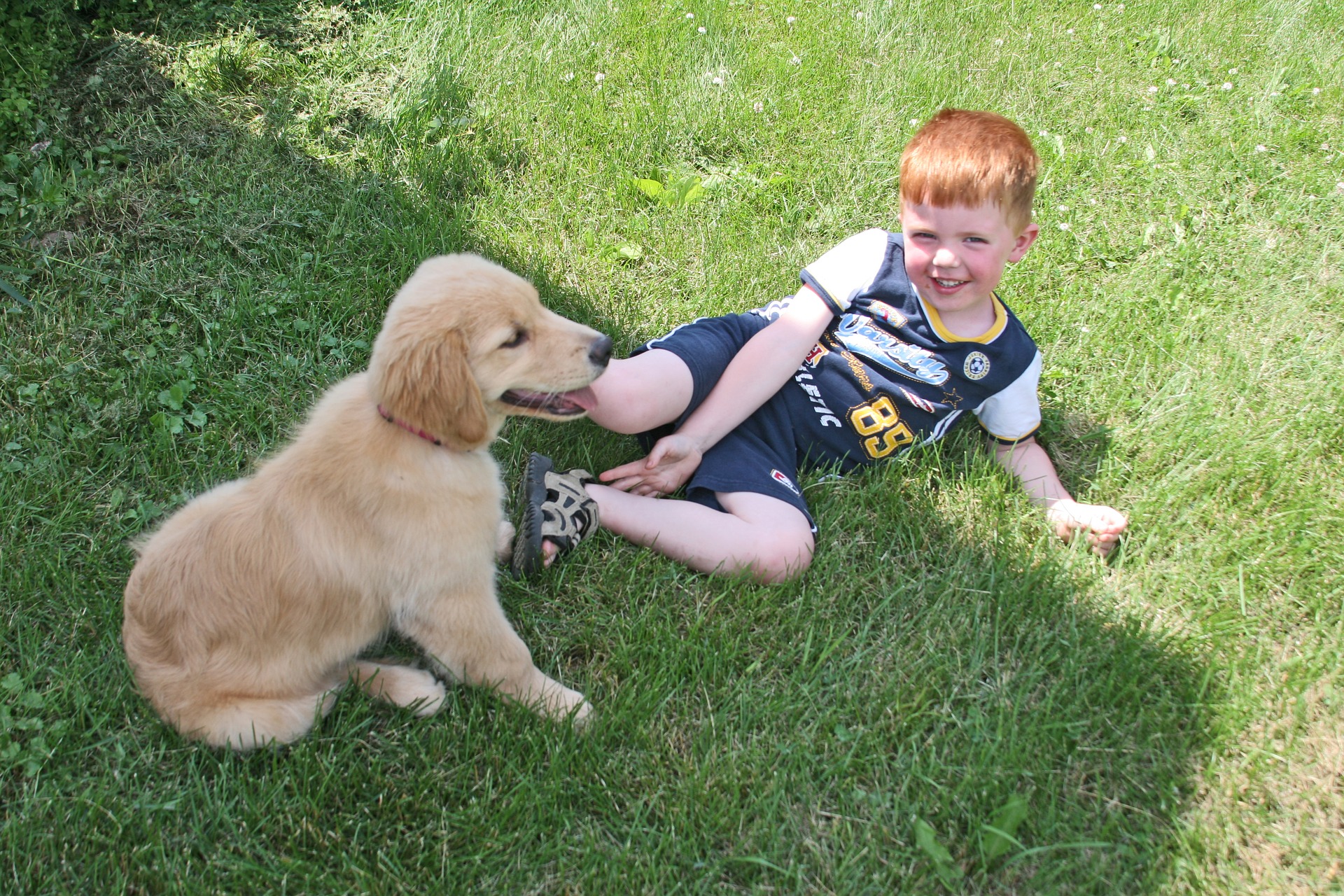It’s important for your family’s safety, happiness, and comfort to properly prepare your dog for the arrival of a baby–especially if it is your first. After successfully socializing your dog to the sounds of crying, the new smells of diapers and baby products, and of course to the baby’s presence itself, you settle into a routine. However, as the baby grows into a toddler and begins crawling and grabbing more, you should take the time to get your dog used to the new interactions they will have with the child. Toddlers are constantly exploring their environment with their newfound mobility. This curiosity means they will likely try to pull your dog’s ears and tail, smack them or grab at their fur. They may tightly squeeze the dog’s stomach or neck in a hug, or flop down on top of the dog when they are laying down.
Pay Attention: All of these actions are new and unexpected for a dog accustomed to interacting with adults, so you need to closely monitor and manage their interactions. Both dogs and toddlers can act unpredictably, and one or both could be hurt if an interaction goes poorly. Set up baby gates to keep them separate during times when your attention is divided, i.e. cooking or doing work on the computer.
Accustom Your Pup to Handling: A dog that is used to being touched all over and having different body parts handled will likely be more tolerant of a child’s arbitrary grabbing. While your baby is still young, start handling your pup everywhere–hold their paws, gently tug their ears and tail, cover their eyes, rub their fur all over. Give them treats and praise for accepting all this handling calmly (or even happily). Your dog will come to associate being touched and handled in this way with treats and positive feelings, making it safer when your toddler does the same.
Create an Alone Space: Just like people, dogs sometimes need alone time. Give your dog their own space to which they can retreat if they feel overwhelmed or if your toddler is being a bit too much for them at the time. This space could be a crate, a dog bed, or other areas that your dog shows a preference for. Talk with your child and make sure they know to never enter this space and leave the dog alone when they retreat there.
Soft Hands, Happy Pup: Work with your toddler to use soft, gentle hands when petting your dog. It will likely take a while for them to do this consistently, as they can turn to harder smacks when excited or upset. They don’t have full control of their actions yet, but it’s important to remind them of the importance of soft hands and separate them from the dog if they continue to hit hard. Explain that you understand they love petting the dog, but for both their safety and Fido’s they need to be separated until they can use soft hands.
Praise Works Better Than Punishment: For both dogs and toddlers, positive reinforcement of behavior is much more effective than punishing negative behavior. Compliment your child when you see them gently petting your dog or speaking softly to them, and since they crave positive attention they are more likely to repeat the behavior. Have treats on hand to reward your dog for calmly accepting a tug or squeeze from your toddler.
If you have any angst regarding bringing your dog home to toddlers, call Gulf Coast K9 Dog Training. We can help your family and canines to acclimate and live happily together.





